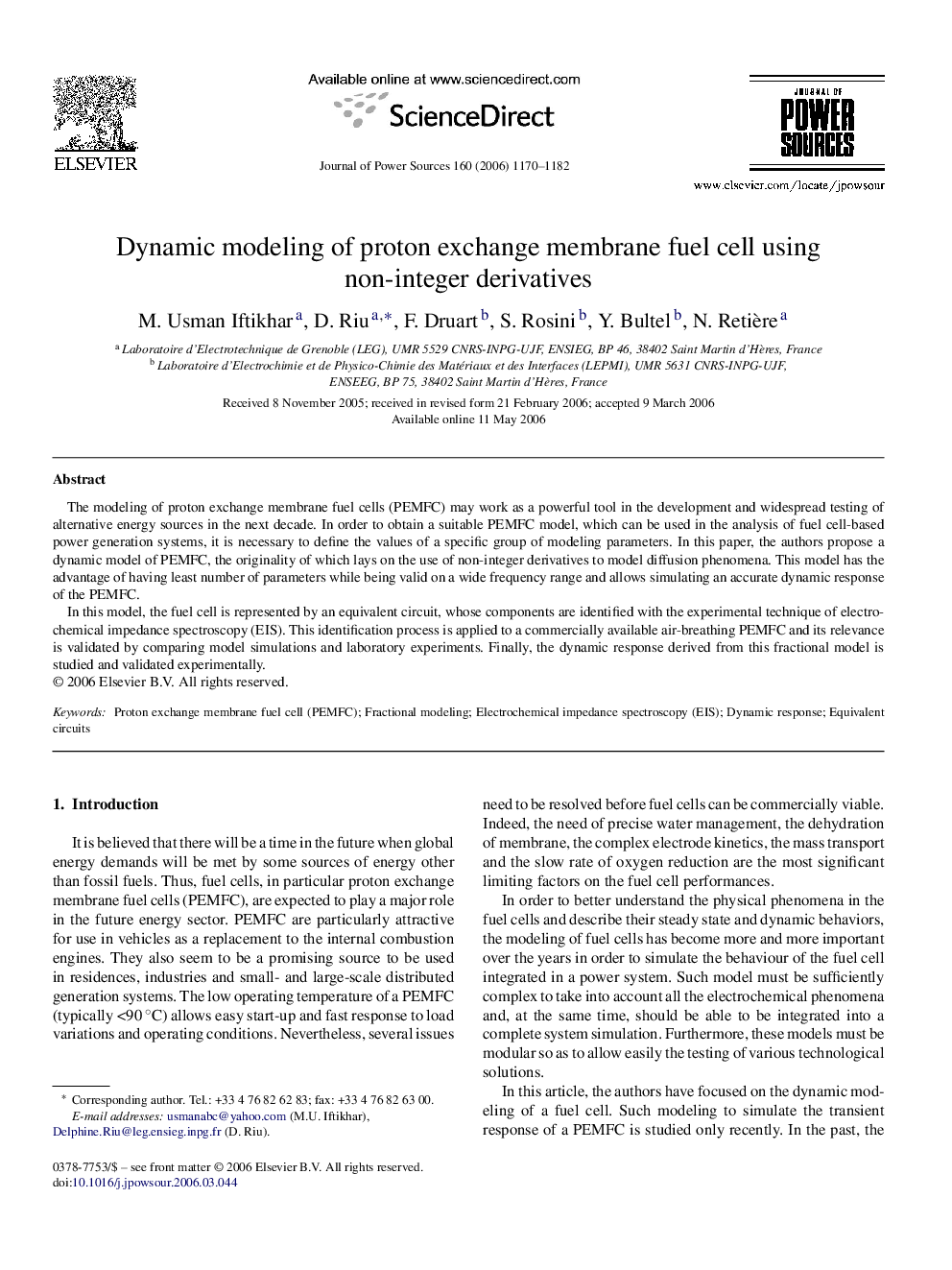| Article ID | Journal | Published Year | Pages | File Type |
|---|---|---|---|---|
| 1287176 | Journal of Power Sources | 2006 | 13 Pages |
The modeling of proton exchange membrane fuel cells (PEMFC) may work as a powerful tool in the development and widespread testing of alternative energy sources in the next decade. In order to obtain a suitable PEMFC model, which can be used in the analysis of fuel cell-based power generation systems, it is necessary to define the values of a specific group of modeling parameters. In this paper, the authors propose a dynamic model of PEMFC, the originality of which lays on the use of non-integer derivatives to model diffusion phenomena. This model has the advantage of having least number of parameters while being valid on a wide frequency range and allows simulating an accurate dynamic response of the PEMFC.In this model, the fuel cell is represented by an equivalent circuit, whose components are identified with the experimental technique of electrochemical impedance spectroscopy (EIS). This identification process is applied to a commercially available air-breathing PEMFC and its relevance is validated by comparing model simulations and laboratory experiments. Finally, the dynamic response derived from this fractional model is studied and validated experimentally.
